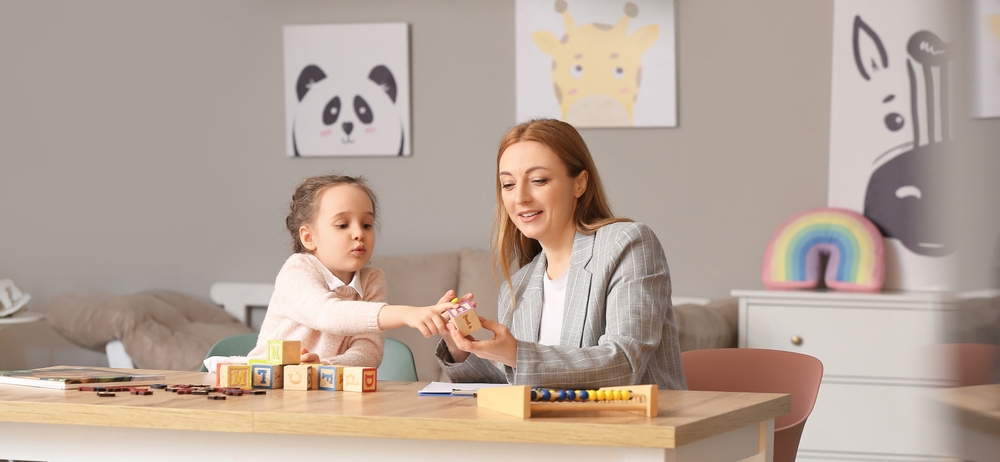For children with developmental delays, injury, or a medical condition, occupational therapy (OT) can be a vital part of helping them achieve independence and perform daily activities. For parents and caregivers, integrating occupational therapy practices at home can be a practical and effective way to support their child’s growth.
This blog will guide you on how to practice pediatric occupational therapy at home and when to seek professional pediatric home health support.
What is Pediatric Occupational Therapy?
Pediatric occupational therapy focuses on helping children between infancy to adolescence develop the skills they need to grow, play, learn, and perform daily activities. Unlike other therapeutic approaches, pediatric occupational therapy emphasizes sensory, motor, and cognitive development, aiming to enhance a child’s ability to function in their daily environment.
Why Would a Child Need Occupational Therapy?
Children might need occupational therapy for various reasons. Some of these situations include:
- Developmental delays
- Fine motor skill challenges
- Sensory processing issues
- Autism
- Down syndrome
- Prematurity
- Dyslexia
- Cerebral Palsy
Occupational therapy helps them manage these challenges by improving their ability to perform tasks like writing, dressing, and playing, essential activities for their overall development and independence.
How to Practice Pediatric Occupational Therapy at Home
 Under the direction of a pediatric occupational therapist, you can create a home program based on your child’s needs. The therapist will observe and advise which exercises and activities are recommended for the child’s specific struggles.
Under the direction of a pediatric occupational therapist, you can create a home program based on your child’s needs. The therapist will observe and advise which exercises and activities are recommended for the child’s specific struggles.
Integrating OT activities into your child’s daily routine helps to make therapy a seamless part of their life. Here are some ways you can promote sensory, motor, and cognitive development:
- Button their shirt
- Zip their jacket
- Tie their shoes
- Brush their teeth
- Make their bed
- Spread butter onto toast
- Pour their breakfast cereal
- Mix the batter for a cake
- Turn the pages in a book
At-Home Occupational Therapy Exercises and Activities
Here are some OT activities children can practice at home.
Language, Fine Motor, and Sensory Skills
- Building a letter bead necklace
- Playing with playdough
- Singing songs
- Building with Lego or blocks
- Finger painting
Visual, Social, and Emotional Skills
- Creating an obstacle course
- Drawing and coloring
- Playing board games
- Doing puzzles
- Pretend play
Vertical Surface Activities
- Chalk/whiteboard drawing
- Easel painting
- Cleaning windows
- Magnets
- Verticle puzzles & velcro boards
Verticle surface activities encourage the use of shoulder muscles and improve hand-eye coordination. These activities also promote proper wrist and finger positioning, which are crucial for writing and other fine motor tasks.
Sensory Activities to Help Children
Sensory activities help children with autism or sensory processing disorder regulate their sensory input. They can involve activities like swinging, jumping, or deep-pressure activities tailored to the child’s sensory needs. These activities help calm or alert their sensory system, enhancing their ability to focus and participate in daily activities.
Other sensory activities include:
1. Sensory bins
Create a sensory bin with materials like rice, beans, sand, or water beads. Add small toys or tools for your child to explore textures and practice fine motor skills.
2. Swinging and Spinning Activities:
Use a swing or spinning chair. This helps with balance and calming the nervous system.
3. Finger Painting and Texture Play:
Encourage your child to use their fingers to paint, feeling the texture of the paint and creating different patterns. You can also provide textured materials like sandpaper, fabric swatches, and sponges for your child to touch and describe.
4. Deep Pressure Activities:
Rolling a therapy ball over your child, giving bear hugs, or using weighted blankets. These activities can be calming and help with sensory regulation. Creating a “sensory sandwich” by gently pressing cushions or pillows on your child can simulate deep pressure input.
Creating a Comprehensive Home-Based OT Plan
To create an effective home-based OT plan:
1. Set goals
Identify specific, measurable goals based on your child’s needs.
2. Track progress
Keep a journal to record activities and your child’s responses.
3. Adjust as needed
Be flexible and adjust the plan based on your child’s progress and feedback from any professional consultations.
Identifying When Your Child Needs a Pediatric Occupational Therapist
While many activities can be performed at home, some signs indicate the need for professional OT support. These include persistent difficulties with daily tasks, significant delays in developmental milestones, or behavioral issues related to sensory processing. If these challenges persist despite home-based interventions, consulting a professional is essential.
How Professional In-Home Pediatric OT Services Work
Professional in-home pediatric occupational therapy services involve a licensed therapist visiting your home to provide specialized care. These services include family education, personalized interventions, and regular assessments to track progress. Professional care is particularly beneficial for children with significant needs, ensuring they receive comprehensive and targeted support.
Finding Professional OT Help
To find professional OT services, start by asking your healthcare provider for recommendations. Local support groups and organizations like the American Occupational Therapy Association (AOTA) can also provide resources. Ensure that any recommended therapists are licensed and experienced in pediatric care.
Americare Can Help
Implementing pediatric occupational therapy at home can significantly benefit your child’s development. However, understanding when to seek professional help is crucial. Americare helps children and families in New York find the best pediatric home care and at-home occupational therapy services, ensuring they receive everything they need to thrive.
If you need assistance finding the right pediatric home health care, or occupational therapy services for your child, reach out to Americare today to speak to a healthcare professional and discuss your challenge.

